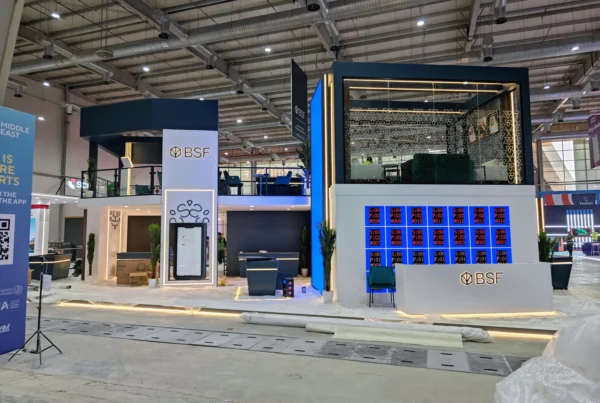As global cities grapple with rapid population growth, environmental pressures, and complex infrastructure demands, urban planners and policymakers are turning to innovative tools for guidance. Enter the digital twin—a dynamic virtual model that mirrors real-world environments in detail. Initially championed by the real estate industry, digital twin solutions are now transforming urban planning, enabling municipalities to visualize growth, test scenarios, and actively involve citizens in shaping their communities.
By blending data-driven insights, photorealistic visuals, and interactive features, digital twins bridge the gap between ambitious visions and tangible realities. This article delves into how digital twin technology supports transparent decision-making, fosters public engagement, and helps align urban development projects with community values.
Envisioning Future Cities through Digital Twins
A digital twin is more than a static 3D model; it’s a living ecosystem that integrates real-time data—traffic flow, environmental metrics, construction progress—into one cohesive platform. Around the world, pioneers are using these tools to support evidence-based planning. For example, Singapore’s Virtual Singapore initiative demonstrates how policymakers can assess infrastructure improvements and sustainability measures before breaking ground.
At Chameleon Interactive, we’ve embraced this technology to help decision-makers and stakeholders see beyond blueprints. By simulating a city’s future, digital twins empower planners to experiment with different layouts and resources, ensuring that development projects unfold more efficiently and sustainably. This clarity fosters confidence among citizens, who can witness how proposals fit into a larger, long-term vision for their neighborhoods.
The Riyadh Digital Twin: A Cutting-Edge Marketing and Planning Tool
A prime example of digital twin innovation is the Riyadh Digital Twin. This state-of-the-art platform, spanning over 1,973 square kilometers, serves as a visually compelling marketing and strategic planning asset. Built using Unreal Engine 5, it highlights key landmarks like Qiddiya, Diriyah, and the Green Riyadh Project, allowing stakeholders to interact with future developments in unprecedented detail.
Displayed on a large 4m x 3m screen and navigated via a tablet, the Riyadh Digital Twin employs pixel streaming technology to maintain AAA-game-level quality. Users can zoom into specific projects, assess infrastructure integration, and refine investment strategies—all through an immersive, data-rich experience. Scalable and adaptive, this platform grows with the city, ensuring that as new projects emerge, they too can be seamlessly integrated, making it a future-proof tool for ongoing urban planning and showcasing.

Citizen Engagement and Transparency
A digital twin’s greatest asset lies in its ability to engage the public. Instead of deciphering technical documents or abstract maps, residents can virtually “walk through” proposals and understand their potential impact. This direct, hands-on access to city plans builds trust, encourages meaningful dialogue, and empowers citizens to provide informed feedback.
The European Commission’s focus on Smart Cities and Communities underscores how interactive tools like digital twins enhance communication between local authorities and residents. When citizens can visualize a future park, new transit line, or housing complex, they’re more likely to support projects that align with their priorities and aspirations.
Lessons from Real Estate Marketing
Though digital twins are now integral to urban planning, the real estate sector pioneered many of these immersive techniques. Developers quickly discovered that data-driven 3D models, interactive customization, and global accessibility could boost buyer confidence. For instance, our article on Showcasing Value in a Hybrid World: Digital Twins and the New Normal of Real Estate Marketing explores how interactive tours, customization tools, and immersive storytelling streamline sales and enhance brand trust.
These principles translate seamlessly into the public domain. Just as real estate professionals leverage digital twins to engage potential buyers, city officials can use them to attract investors, highlight development opportunities, and communicate plans effectively. With tools like Unreal Engine delivering superior graphical fidelity—discussed in Digital Twins for Real Estate: Why Unreal Engine Outshines Unity—cities can present proposed projects with stunning realism, making once-abstract concepts feel tangible and credible.
Future-Proofing Marketing with Immersive Event Technology
As technology advances, integrating immersive event technology and personalized digital journeys will only grow more essential. Reports like Emerging Trends in Real Estate® 2025 by ULI and PwC forecast increased adoption of virtual and augmented reality, AI-driven personalization, and Metahuman-guided tours—innovations already exemplified in “The Metahuman Roadmap: Future Trends Shaping Immersive Event Solutions”.
Digital twins serve as the foundation upon which these new technologies can flourish. Imagine hosting a virtual launch event where guests interact with a property’s digital twin environment, guided by a Metahuman host. Add to that the ability to collect data-driven insights about buyer preferences and engagement patterns, and you have a continually improving marketing engine.
Large-scale projects like the Jeddah Central Development Company Digital Twin Project prove that digital twins can handle complex urban scales. These 3D models offer VR viewing, pop-ups with detailed property specs, and captivating walkthroughs—all crucial for enticing global buyers and securing early commitments.
Integrating Immersive Event Technology
Digital twins align perfectly with immersive event technology and audiovisual solutions, allowing municipalities to create compelling presentations at public forums, trade shows, and community gatherings. Previously, such events relied on static posters or scale models. Now, cities can invite citizens to virtually navigate proposed neighborhoods, assess aesthetic elements, and even compare scenarios side-by-side.
In the real estate world, Transform Real Estate Marketing at Trade Shows with Digital Twin and Audiovisual Solutions illustrates how dynamic displays can turn passive visitors into active participants. Applying similar strategies to public consultations and urban exhibitions can spark richer conversations, guiding more informed and inclusive decision-making.
Key Success Factors for Urban Digital Twins
Developing a digital twin that truly serves its urban planning purpose is no small feat. Data quality, user experience, scalability, and long-term adaptability are vital. Our piece on Digital Twin for Real Estate: 7 Key Factors for Digital Twin Success highlights crucial elements—such as ensuring accurate inputs, maintaining responsive interfaces, and integrating with existing city data systems—that are equally relevant when expanding beyond private projects into public realms.
For municipalities, success also hinges on prioritizing inclusivity. Easy navigation, intuitive controls, and accessible interfaces help citizens of all backgrounds understand development plans. By proactively seeking community feedback and refining digital twins based on input, cities can refine their plans and improve their relationships with the people they serve.
Driving Sustainability and Future-Readiness
Beyond immediate infrastructure improvements, digital twins help cities anticipate challenges and plan for sustainability. According to insights from the World Economic Forum, smart city projects often use data-driven simulations to test climate adaptation strategies, reduce traffic congestion, and optimize energy consumption. Digital twins enable what-if scenarios that can guide investments in green spaces, public transit, and other eco-friendly measures.
As technology advances, AI and IoT integrations will make digital twins even more powerful. Cities can incorporate sensor data—on air quality, noise pollution, or water usage—into their models, allowing for agile responses to emerging issues. Over time, these platforms may connect to larger networks, enabling cities to learn from each other’s successes and work collectively toward a more sustainable urban future.
Shaping Urban Futures with Confidence
In a world of shifting priorities and complex challenges, digital twins provide a stable framework for envisioning, evaluating, and enacting change. By offering stakeholders—from elected officials to everyday residents—a clear, interactive view of proposed developments, these tools demystify planning processes and align projects with community needs.
This data-rich, accessible technology helps cities evolve more thoughtfully and transparently. As more municipalities adopt digital twins for urban planning, public engagement, and strategic decision-making, they’ll find that the once-distant future of fully integrated, sustainable, and resident-focused cities is now within reach.
In essence, the digital twin stands as both a mirror and a window: reflecting current conditions while illuminating the path forward. By blending innovation, inclusivity, and foresight, this transformative tool ensures that as we move from vision to reality, our cities become places where everyone’s voice is heard—and every decision is informed.


